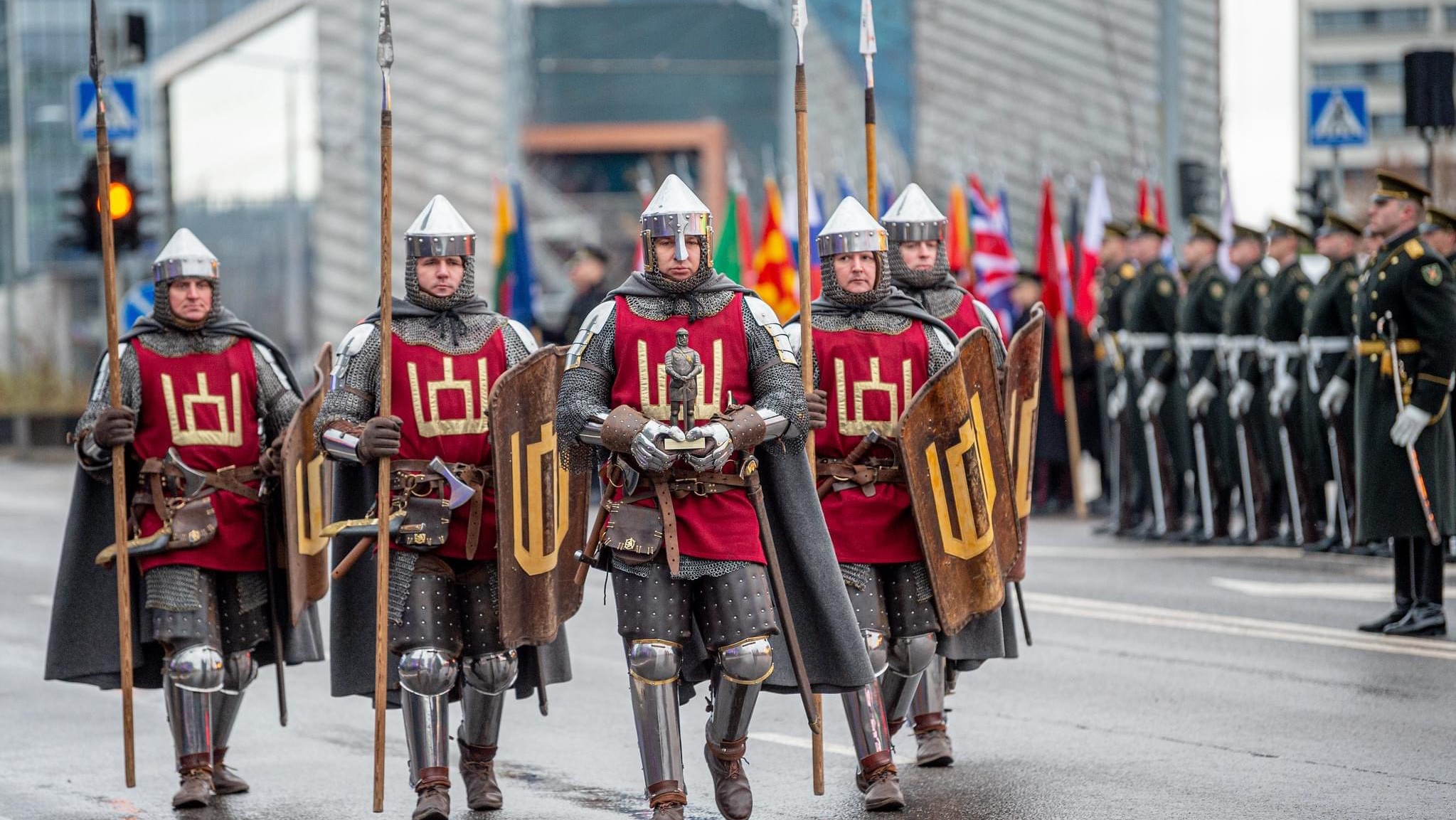

The North Atlantic Treaty Organization boasts 31 nations in its ranks, millions of troops from those states, multiple arsenals of nuclear weapons and thousands of tanks. It also features knights in medieval armor.
At least five of them. Yes, really. And American soldiers just joined them for a military parade.
Saturday, Nov. 25 was the 105th Lithuanian Armed Forces Day. The holiday celebrates the reestablishment of the nation’s own sovereign armed forces following the end of World War I. This year roughly 1,400 people marched through the capital city of Vilnius, alongside 100 pieces of military equipment.
Subscribe to Task & Purpose Today. Get the latest military news and culture in your inbox daily.
The most striking element on display was a force of five knights. And they truly fit the bill, decked out in chainmail and plate armor. Four carried spears and shields, while the lead knight carried a small statue of a Lithuanian knight. All five had small axes and large swords on their hips and their armor was covered in a bright red tabard bearing the Columns of Gediminas, a historic Lithuanian coat of arms that is also the emblem for the armed forces. Although some of the soldiers in modern military uniforms sported thick beards, these throwbacks to the age of swords and horses were all clean shaven. The nation’s Ministry of Defence itself highlighted the five knights in a post on X (formerly known as Twitter) celebrating Lithuanian Armed Forces Day.
These weren’t just a minor tribute to the country’s past buried in the proceedings. The five knights stood at the front of a gathering of the nation’s troops, all in dress (or chainmail) uniform.
Alongside Lithuanian troops, the parade and celebration featured elements from NATO member states, including the United States, Germany, France, Norway and others. That included U.S. Army Abrams tanks and M2 Bradley Fighting vehicles from the 3rd Infantry Division, plus armor units from other nations. However it appears that no other NATO member state brought knights with its troops.
In September, the 3rd Infantry Division took command of the Army’s presence in the Baltic states including Lithuania, as well as Poland. Approximately 4,500 soldiers with the division deployed as part of a mission focused on both training host nations’ militaries and serving as an additional deterrent against Russia.
Days celebrating nations’ militaries are relatively common, particularly in Europe. The celebrations generally feature parades and displays of martial prowess (and in Belarus that means smashing one’s head on glass or bricks while the theme from Mortal Kombat plays). And many nations still maintain some units that will occasionally wear historic uniforms, as a way to highlight a military’s past. Generally those are from the early modern era, in the time of say muskets or muzzle-loaded rifles, not knights and castles.
Although suits of armor and swords have all but faded from the battle, they do occasionally pop up. In World War II the…eccentric British commando “Mad” Jack Churchill favored a Scottish broadsword and a longbow over a firearm. Earlier in 1938, when the Nazis invaded Czechoslovakia, Josef Mencik donned armor, grabbed a sword and halberd and got on horseback to try and block a German tank advance. He failed but has been known in history as the “Last Knight.” Obviously the existence of these five Lithuanian knights shows the tradition carries on in some form.
So, theoretically, if NATO’s Article 5 is ever invoked, it could mean knights are mustered for war. It’s unlikely medieval knights could fight in modern combat, but it is possible.
The latest on Task & Purpose
- End of an era: The last class of Marine Scout Snipers graduates on Dec. 15
- That one scene: The most unrealistic part of ‘Rambo: First Blood’
- AC-130 destroys truck after watching it launch ballistic missile at US troops in Iraq
- Army veteran launches ‘Hots & Cots,’ a Yelp for enlisted life
- Trench warfare tips: What US troops need to know from Ukraine
